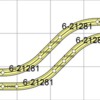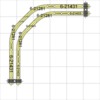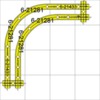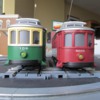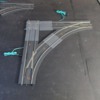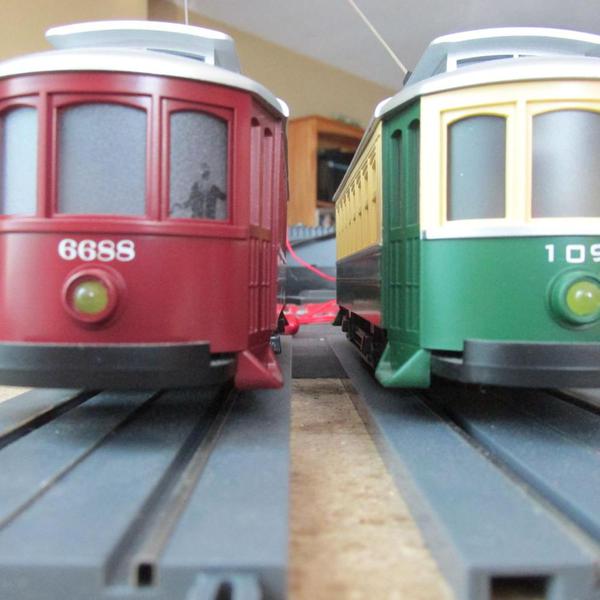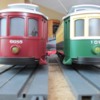About a year ago I sat down with Anyrail and began designing a track segment based on a S-curve I encountered while on vacation in Lisbon, Portugal. One the drawbacks of Streets is that only the D21 curves will accommodate many of the larger models we want to run. Unfortunately D16 curves inside D21 curves only allow vehicles with minimum overhang to clear curves at the same time. In time I would like to do something other than just run in rectangular loops.
In this segment, all the curves are D21 which allows for larger streetcars, buses, trucks (or Sherman Tanks) with their greater overhang. But this should work just as well for the small Streets cars and trucks too. The diamonds at each end are optional, but establish that the track spacing is consistent before entering the curve and on leaving the curve.
A key piece used in these segments is the 6-21282 (Superstreets) or 00265(E-Z Streets) 2.5" straight curve to curve section. Its a form of gauge widening and allows wheels to run freer between sharp curves.
As an s-curve, this plan includes a short straight between the two curves to reduce the chances of derailments.
As Anyrail only offers K-Line by Lionel Superstreets stock numbers this what is used in the diagrams. I can post the conversion to E-Z Streets if necessary.
Materials List (S-Curve)
4 x 6-21261. Straight 2.5"
4 x 6-21281. Curve radius 9.54" , angle 45º
6 x 6-21282. Straight 2.5"
3 x 6-21431. Straight 10"
1 x 6-21433. Straight 5"
Spacing lines are at 6 inches, so this plan is 4 feet long and 1.5 feet wide.





